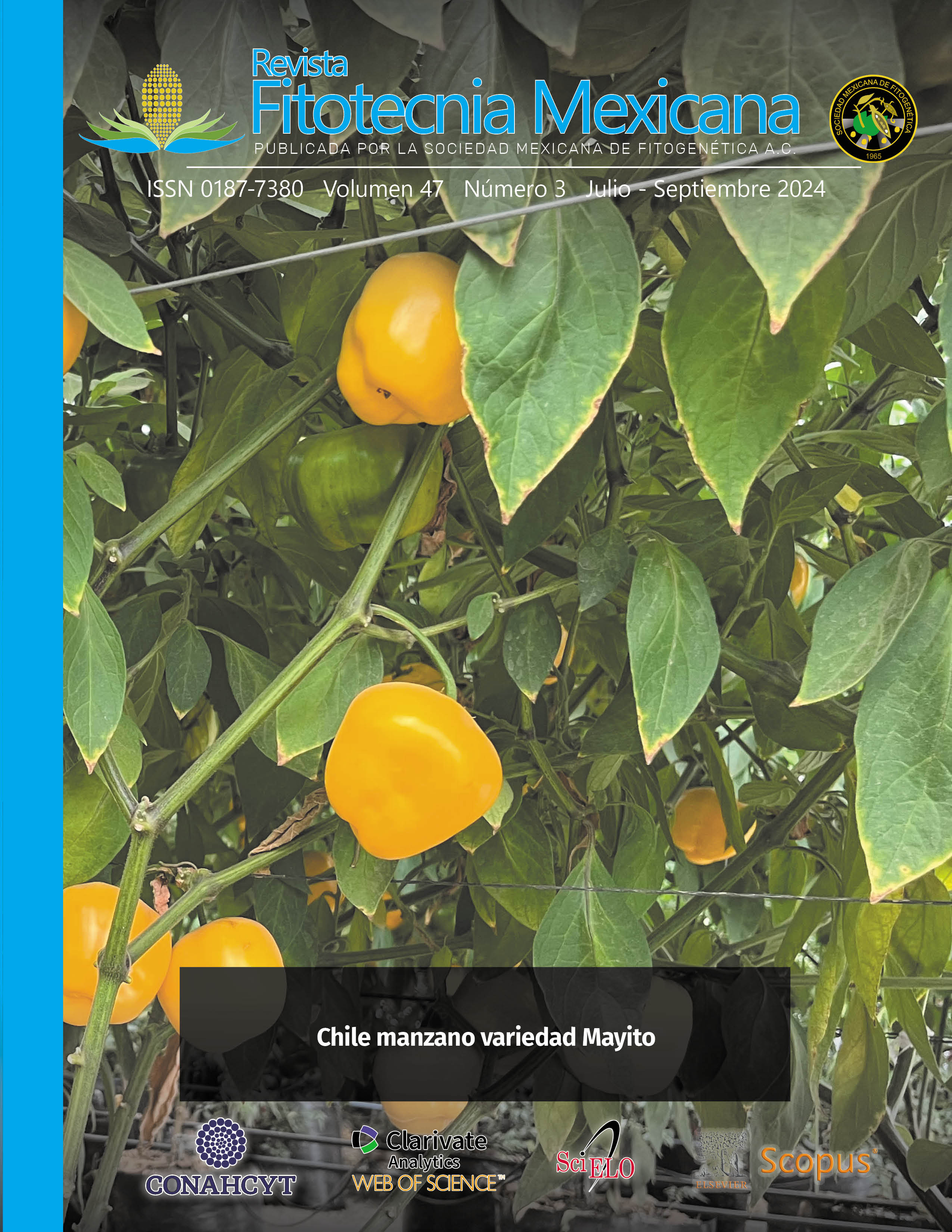GRAIN YIELD OF Vigna radiata L. AT DIFFERENT PLANT DENSITIES IN HUMID TROPICS
Main Article Content
Abstract
Due to its agronomic and nutritional characteristics, mung bean (Vigna radiata L.) is used in human and animal feed, as well as to restore soil fertility. The objective of this research was to estimate growth and seed yield components in mung bean, at different plant densities and sowing times under rainfed conditions in Loma Bonita, Oaxaca, Mexico. Three trials were established during 2018, 2019 and 2020 at the Universidad del Papaloapan. A randomized complete block design with four plant densities: 71,425; 95,232; 142,850 and 285,714 plants ha-1 and three replications. The experimental plot was 12.0 m2 with four rows 4.0 m long, 75 cm apart. In five plants per experimental unit, the following traits were measured: plant height, stem diameter, leaf area per plant, number of trifoliate leaves, leaflets per plant, pods per plant, pods per plant, seeds per pod, number of seeds per plant, pod length and width, weight of 100 seeds, and seed yield per plant and per hectare. The information was subjected to analysis of variance with PROC GLM of SAS and a comparison of means of treatments (Tukey, P ≤ 0.05). Results indicated that mung bean is adapted to the production conditions prevailing in the humid tropics of Mexico, favoring the yield components number of pods per plant, grains per pod and 100-seed weight at low plant densities. Grain yield increased by 46, 103 and 155 % as plant density increased. It is concluded that to obtain the highest grain yield of mung bean under rainfed conditions in the humid tropics of Mexico, it is necessary to establish a population density in 285,714 plants ha-1.

